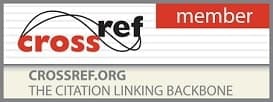- Printed Journal
- Indexed Journal
- Refereed Journal
- Peer Reviewed Journal
P-ISSN: 2394-1685 | E-ISSN: 2394-1693 | CODEN: IJPEJB
Impact Factor (RJIF): 5.38
2019, Vol. 6, Issue 4, Part A
Prognostic validity of morphological, physiological and motor characteristics in classifying university athletes in different sports
Author(s): Micky Oloo Olutende, Dr. Maximilla N Wanzala, Anthony Muchiri Wangui and Edwin Kadima Wamukoya
Abstract:
Talent selection in university sport should be based on morphological, physiological and motor diagnostics for purposes of recommending or transferring athletes to specific sports for best performance. However, the predictive value of such testing is unclear. This study evaluated the validity of morphological, physiological, as well as specific motor performance prerequisites. The aim of this investigation was discriminating university athletes of different sports based on the morphological, physiological and motor characteristics. Two hundred and eighty-five university students belonging to twelve different sports and aged between 17 and 28 years (mean age 21.4 ± 2.1, CI 21.0-21.8 years) participated in this study. A cross-sectional analytical study design was used in the study. University athletes randomly selected volunteered as subjects. The physiological characteristics assessed included resting heart rate, the morphological characteristics assessed included; Body height, body weight and body fat percentage. Motor characteristics assessed included upper body and lower body muscular endurance. Neural Network (Multilayer Perceptron) was used to test whether it is possible to discriminate between athletes of the twelve sports and to assign each individual to his own sport on the basis of a unique profile of the morphological, motor, and physiological prerequisites. The data was also analyzed using Multivariate analysis of variance (Manova) to determine if the groups were significantly different on morphological, motor, and physiological characteristics. Statistical packages for social science version 25 was used in the analysis. The results showed that after a cross validated MLP (Multilayer perceptron) analysis using the leave “8.7%†out procedure, 34.6% of the 209 athletes were classified correctly and assigned as true positives to their own sport. The best classification result of 15.4% correct hits were obtained in handball and Tennis. No true positives were found in Chess and netball (0.0%). Manova analysis showed that, the individual test of differences in means was statistically different among the sports in all dependent variables except; Height (f (11,274) =1.087, p=.372), Pulse (f (11,274) =3.675, p=.070) and Percentage body fat (f (11, 274)=3.759, p=.065). The global test for equality of the mean vectors for the twelve sports groups was significant for groups (Pillai’s T, p<0.01). This showed that the groups were statistically different in a linear combination of all dependent variables. In conclusion participation in specific sports should be associated with the selection of athletes with specific prerequisites.
Pages: 38-44 | 827 Views 66 Downloads
Download Full Article: Click Here
How to cite this article:
Micky Oloo Olutende, Dr. Maximilla N Wanzala, Anthony Muchiri Wangui, Edwin Kadima Wamukoya. Prognostic validity of morphological, physiological and motor characteristics in classifying university athletes in different sports. Int J Phys Educ Sports Health 2019;6(4):38-44.








 Research Journals
Research Journals